5 outdoor spots that are off-limits, and they're each hiding a fascinating story
While all these places may appear on maps to allow public access, dinosaurs, spies, killer spores, and jet bombers will keep you out. Normally, Crown-owned land is publicly accessible – but not always.
1. Takapourewa - Stephens Island
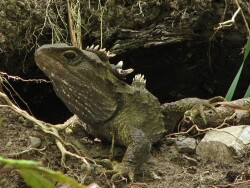
Photo by Michael Hamilton Digitaltrails on Wikimedia
It's a real-life Jurassic Park. 30,000 tuatara, the world's only surviving dinosaurs, live on Stephens Island. And they are not alone. Other residents include the Stephens Island gecko and Hamilton's frog – possibly the rarest frog in the world. But there are no people. Because of its status as a nature reserve, the Department of Conservation restricts access to a few permit holders only.
Tuatara are the only surviving members of the order Sphenodontia. They flourished during the age of the dinosaurs, some 200 million years ago. All the other sphenodontia became extinct about 60 million years ago – but not the tuatara.
Learn more:
- Map
- Maritime NZ: Stephens Island
- Driftwood Ecotours: Takapourewa Stephens-Island
- NZ Geographic: Island refuge
2. Waihopai Station Secure Communication Facility
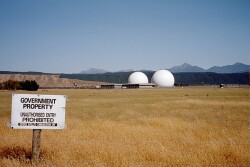
Photo by Schutz on Wikimedia
Waihopai Station Secure Communication Facility is a spy base undertaking surveillance for the home nations of James Bond and Ethan Hunt.
The base is run by the New Zealand Government Communications Security Bureau. It's a highly secretive facility integral to New Zealand's national security infrastructure. The land around the base is off-limits to everyone. A breach of security at the base could compromise the safety and security of the country.
With documents from NSA whistleblower Edward Snowden suggesting that Waihopai was surveilling for the Five Eyes alliance of New Zealand, the United States, the United Kingdom, Canada and Australia, it's no surprise that protesters have attempted to break into this Crown-owned land.
Learn more:
3. South Head on the Kaipara Harbour
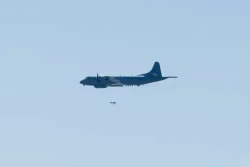
Photo from NZDF (Crown copyright)
The Kaipara Air Weapons Range at South Head is where the Air Force conducts live bombing exercises.
The range, which is made up of dunes, wetlands, and tussocks, is a beautiful part of Kaipara. The Defence Force strictly prohibits public access at all times, including when no military activity is occurring. It uses drones and infrared cameras to catch unauthorised people and vehicles within the zone. But that hasn't stopped some surfcasters, motorcyclists, and four-wheel drive enthusiasts from trying to explore the area.
The Air Force has been conducting live bombing exercises for more than 20 years at the Kaipara Air Weapons Range at South Head on the Kaipara Harbour.
The range extends down the west coast as far as the '26 Mile' warning sign and includes part of the south coast of the Kaipara Harbour entrance.
Learn more:
4. Waitākere Forest (Te Wao Nui o Tiriwa)
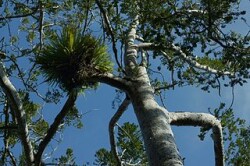
Photo by Avenue on Wikimedia
It's a scene from science fiction – monstrous, ancient trees in the Waitākere Forest are under attack from killer microscopic spores. Due to this threat, the mana whenua of Waitākere, Te Kawerau ā Maki, have placed a rāhui over the forest to protect it. This is a form of tapu, a temporary restriction on access to the area, and it's all for a good cause - to preserve this beautiful and unique forest.
Kauri Dieback spores (Phytophthora agathidicida), which are killing NZ's iconic Kauri trees, are spread almost exclusively by people or animals disturbing the soil — the more disturbance, the greater the risk of spreading the spores closer to kauri trees.
So scientists are racing to find a cure to save our kauri while the rāhui is in place.
Learn more:
5. Mātiu Somes Island
Actually, normally you can visit this last place.
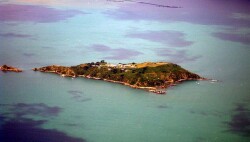
Photo by Mark Defluery on Flickr
Mātiu Somes Island used to be hard to escape from – it was a human quarantine station and an internment camp for war prisoners. These days, it's hard to get on.
Matiu Somes Island is a unique and beautiful island in the middle of Wellington Harbour in New Zealand. It is a sanctuary for native plants, reptiles, tuatara, kākāriki, North Island robins, little blue penguins and wētā. But before you get to wander the island, you'll face a comprehensive security search. A DOC ranger will check your bags, clothes, footwear and boat or kayak for pests.
You better make sure your pockets and picnic basket are free of rodents, insects and plant material and that your shoes are clean.
After the biosecurity check, the ranger will give a briefing on the island's biosecurity rules. DOC says the whole biosecurity check can take 15–20 minutes.
At the moment Mātiu Somes Island is shut while a new wharf is built. You should be able to get there again by summer 2024 but keep an eye on the DOC website.
Learn more:
Intrigued by these secret places? Good public access is essential to our mental and physical wellbeing. It connects us to te taiao and connects our communities. As New Zealanders, many of us believe that free, certain, enduring, and practical public access to the outdoors is a birthright. But like all rights, we need to balance it with our responsibilities to the world around us. There are many outdoor spots around NZ where our public access rights are restricted so we can better care for the environment around us and other people.
If you want to know more about your rights and responsibilities in the outdoors, check out our Outdoor Access Code.

